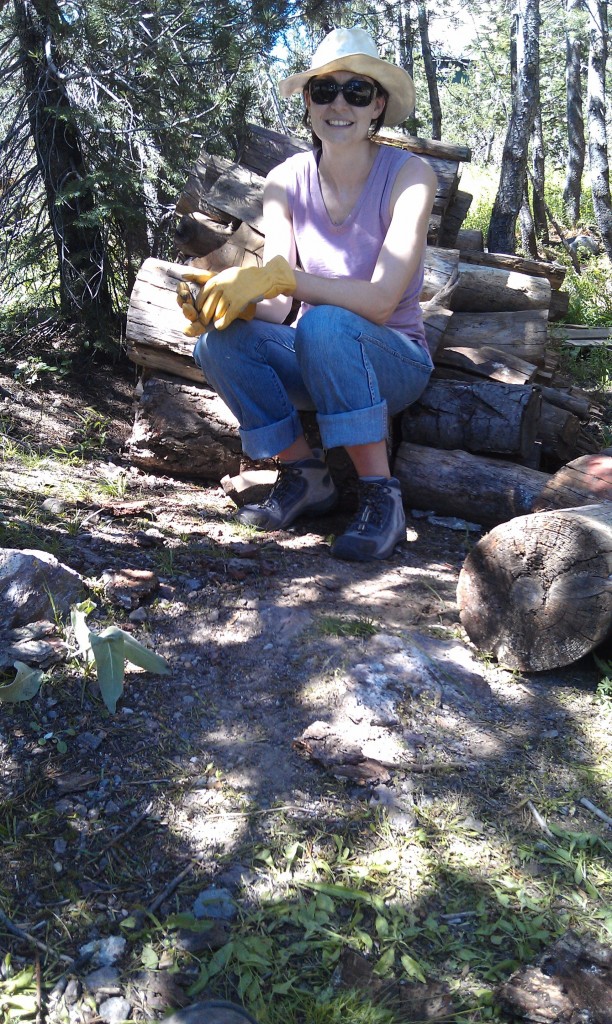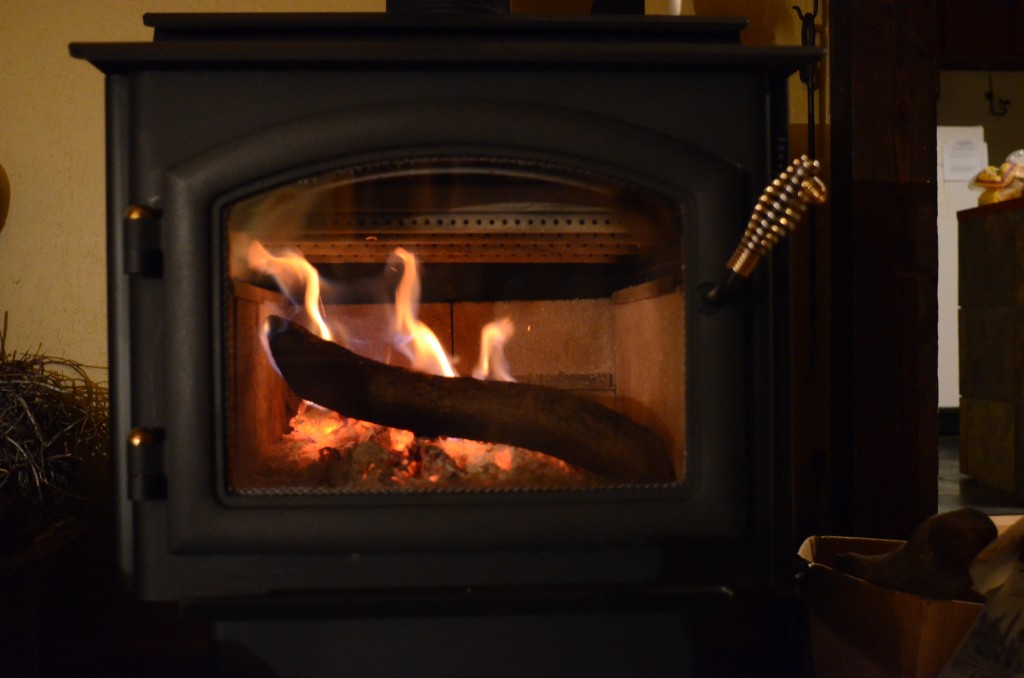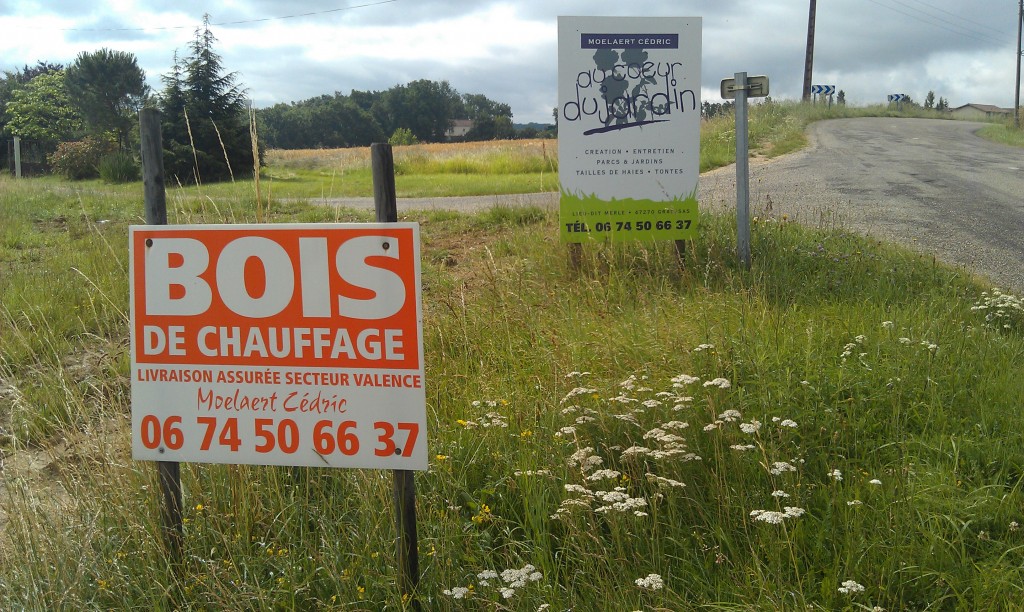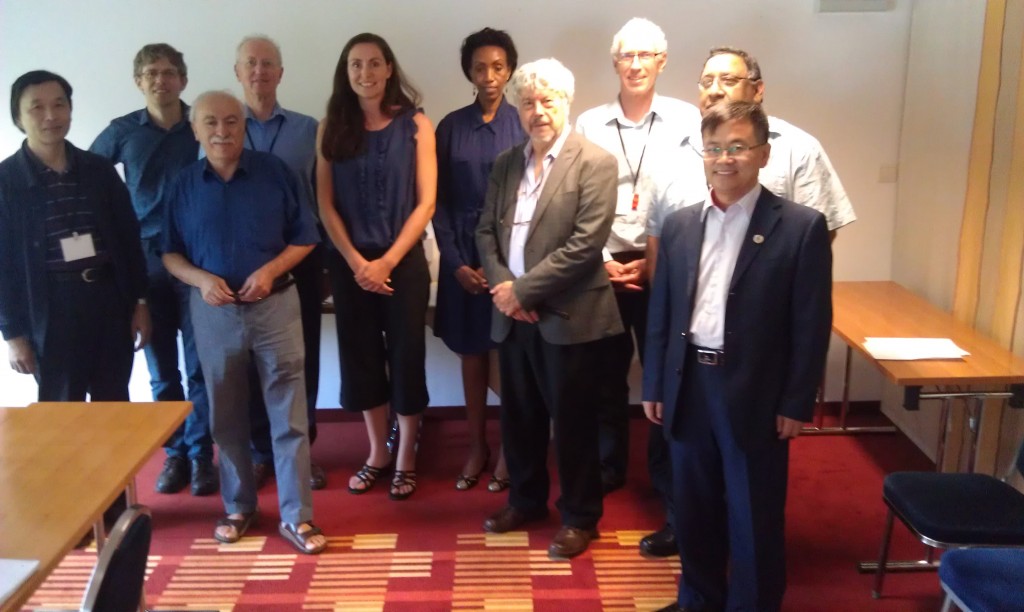
“In Europe alone, the outdoor air pollution from residential wood/coal burning for heating causes about 60,000 premature deaths per year,” says Zoë Chafe, lead author of a new World Health Organization (WHO) report released last week.
Zoë, a PhD candidate with the Energy and Resources Group, explores the intersection between energy and public health. Below she explains her work and her experiences with working on the WHO and most recent IPCC reports.
How did you get involved in writing this WHO report?
Through my research at ERG, I developed a methodology for estimating health effects of outdoor air pollution that comes from household combustion of wood, coal, and other solid fuels. This was motivated by an interest in understanding the indoor and outdoor air pollution effects of cooking with solid fuels.
One of my collaborators approached me to let me know that a WHO office was interested in better understanding the outdoor air pollution and health effects of residential heating with solid fuels (wood and coal), especially in Europe and North America. I was able to apply my methodologies to new data to answer some of their questions about the health effects of heating with wood and coal.
After seeing the initial findings, the group that had originally requested WHO to prepare this report, the Convention on Long-Range Transboundary Air Pollution Task Force on Health, decided that there was a need not only for a summary of scientific understanding about residential heating with wood and coal but also for a document aimed at helping policymakers understand the magnitude of the problem and the available policy and regulatory options. I took the lead in preparing this.
How was the experience of working in a collaborative effort with the WHO?
Working on this report has been an invaluable experience because I have had the opportunity to actively collaborate with incredible health scientists, air pollution specialists, energy modelers, and policy professionals across several continents. Beyond Berkeley, I worked closely with colleagues at the International Institute for Applied Systems Analysis (IIASA) — several of whom I had met previously through participation in their Young Scientists Summer Program — as well as at the University of British Columbia and the Finland National Institute for Health and Welfare.
My collaborators at the WHO Regional Office for Europe were supportive throughout the process of scoping the topic, preparing preliminary reports, interfacing with member government representatives, offering feedback, and finalizing our writing. They clearly recognized the importance of this topic and have prioritized it over the course of several years. One of the benefits of working with the WHO is that they are keen to make their products accessible to many member governments, so this report will be translated into other languages, which will increase its reach.
As part of the report-writing process, I attended meetings of the Convention on Long-Range Transboundary Air Pollution Task Force on Health — held at the WHO’s regional offices in Bonn — and I was grateful to hear that the governmental representatives in attendance took this topic very seriously.

EPA-certified wood stove in US
Summary of WHO Report: Wood and Coal Burning in Europe and North America
Major Source of Pollution: Household heating with wood, coal, and other “solid fuels” is a major source of outdoor air pollution in Europe, North America, and other parts of the world. It will be difficult for policymakers in these regions to tackle outdoor air pollution problems without addressing emissions from household combustion of wood/coal for heating.
Dangerous to Human Health: Burning wood and coal for heating is dangerous to human health. In Europe alone, the outdoor air pollution from residential wood/coal burning for heating causes about 60,000 premature deaths per year. The particulate air pollution from burning wood appears to be as harmful to health as that from burning diesel and other fossil fuels.
Measures to Reduce Emissions: There are many regulatory and voluntary measures available to help reduce emissions from household heating with wood/coal, including: setting emissions standards for new wood stoves, labeling stoves with emissions information to help consumers make informed choices, offering financial incentives for fuel switching, creating “no burn” days when meteorological conditions make burning wood especially dangerous, and educating communities about safer wood burning practices.
Implications Related to Climate Change: There are potential trade-offs between climate change mitigation goals and local air quality goals, related to wood burning for heating. If climate change mitigation policies encourage the use of biomass for residential space heating (as a “renewable” fuel), these policies should also encourage the use of the most efficient wood heating stoves available.
Solid fuel use and health is generally thought of as an issue in developing countries. What motivated you to focus your current efforts on North America and Europe?
One of our primary motivations for focusing this report on North America and Europe is the fact that when people think of household biomass energy use they usually think of it as an issue that pertains only to developing countries — where families often are unable to afford other types of fuel for cooking and heating. Household heating with biomass/coal definitely is an issue in many developing countries, but here we focus closer to home. In our report, we have examples of the particulate air pollution levels measured in various cities and towns in Europe, the US, and Canada, as well as estimates of the public health effects associated with wood burning.
We wanted to help policymakers and members of the general public understand that household heating with biomass is a complicated issue that is affecting air quality and public health as we speak. It is not an old practice that has mostly died out. It is not something that is restricted to rural communities in a few countries. It is a widespread practice that has serious implications for air quality and health in many countries. In fact, it is the top source of particulate air pollution in the San Francisco Bay Area during winter months!
The policy options available to limit emissions from household wood heating are quite different in North America and Europe than they are in many developing countries. For example, the US EPA recently released emission standards for new wood heating stoves, and the European Union is in the process of approving similar “ecodesign” regulations. Some cities, air basins, and states (including California’s Bay Area) have the authority to limit wood burning on days when air pollution levels become dangerous to human health. In some ways, this makes it easier for North American and European countries to mitigate the health effects associated with wood home heating compared to developing countries where governments may not have the equipment or capacity to monitor air pollution or to establish and enforce burning limits. This is especially true in areas where most citizens do not have the ability to use other types of heating (gas or electric, for example) because of lack of availability or affordability.
I should note, though, that the WHO recently published Indoor Air Quality Guidelines that set emissions rate targets for solid fuel cooking stoves, which should help countries that are looking to reduce emissions from household cooking.

Sign for firewood in France
How was the experience of focusing on the developed world different than your other studies?
Many of the major studies on outdoor air pollution from household combustion have been done in industrialized countries, as have the studies linking health effects to woodsmoke exposure. The models that I used in my analysis were initially constructed to inform European policymakers, so energy use and emissions data are most detailed for the regions we focused on in this report. While there is a growing awareness of the dangers of outdoor air pollution in China and India, for example, we have decades of results from studies in the US, Canada, and many European studies that we report in this document. While many of studies are relatively local in nature, it is easy to see patterns emerge when they are reported side-by-side. That was one of our goals in this report.
In this report, I find that in 2010 in Europe, the US, and Canada, about 70,000 premature deaths were attributable to the outdoor air pollution from household heating with wood and coal. Compare this to the fact that more than 5 times as many premature deaths (370,000) occurred worldwide as a result of outdoor air pollution from household “cooking” with solid fuels in the same year.
Despite this big difference in public health effects, I’ve arguably already had much more interest in the results of this North America and Europe heating report than in my work on household cooking with wood and coal. Many of my family members and friends heat their homes with wood at least part of the winter and they have been shocked to learn of the documented health effects of wood smoke. This report has started quite a few heated conversations (pun intended!), and I am glad to have the opportunity to talk through the issue with anyone interested; as there are many factors to consider before deciding whether burning wood is a “good” or “bad” option.

IPCC writing team for health chapter
You have also worked on the recent IPCC report. How was that experience compared to your work with the WHO report?
I served as chapter scientist for the Human Health chapter of the recent Intergovernmental Panel on Climate Change (IPCC) Fifth Assessment Report (AR5). The IPCC writing process was longer and more structured, with a much larger scope of inquiry, a framework that guides what literature can be reviewed, and specific language that is used to express uncertainty, for example. In both cases, I was privileged to work with extremely smart and dedicated collaborators who spent hundreds of hours of time creating and refining our documents. I really appreciated having co-authors from countries across the world, who brought unique expertise and perspectives to our work. And for both reports, I had the honor of working with Prof. Kirk Smith, who is my dissertation chair here at Berkeley.
What does the future look like for you?
As a result of the research for this report, I’ve become very interested in the different ways that household wood burning can be viewed — from a climate change mitigation policy perspective (where it is often seen as a renewable fuel alternative to fossil fuels) and local air quality perspective (where it is viewed as a significant source of pollution and threat to public health), for example. My current work focuses on reconciling potential trade-offs between these different perspectives, offering guidance for future regulation, and exploring what might happen to wood if is not used for household heating or cooking.
More broadly, I continue to explore potential co-benefits of climate change mitigation strategies, especially related to household energy use, and new ways of communicating how climate change mitigation can help or harm human health.
I am grateful to ERG for providing such a wonderful intellectual community, as I worked through this project and others. My work has been benefited from collaboration, feedback, and the wisdom of many diverse perspectives during my time as a graduate student at ERG.
See the full WHO report here.